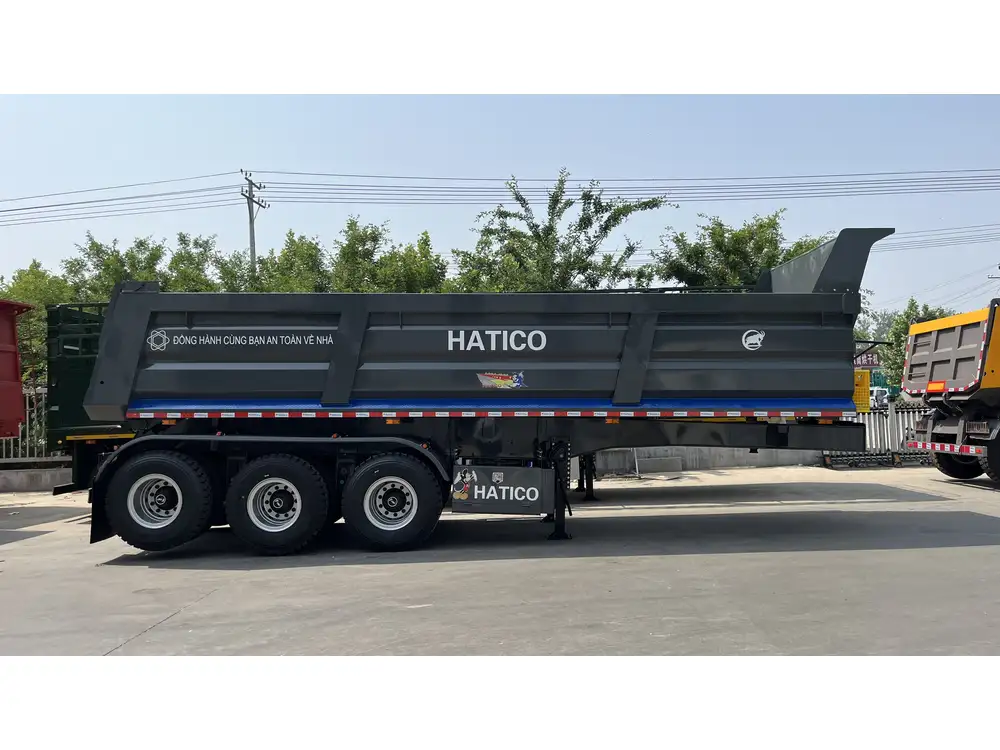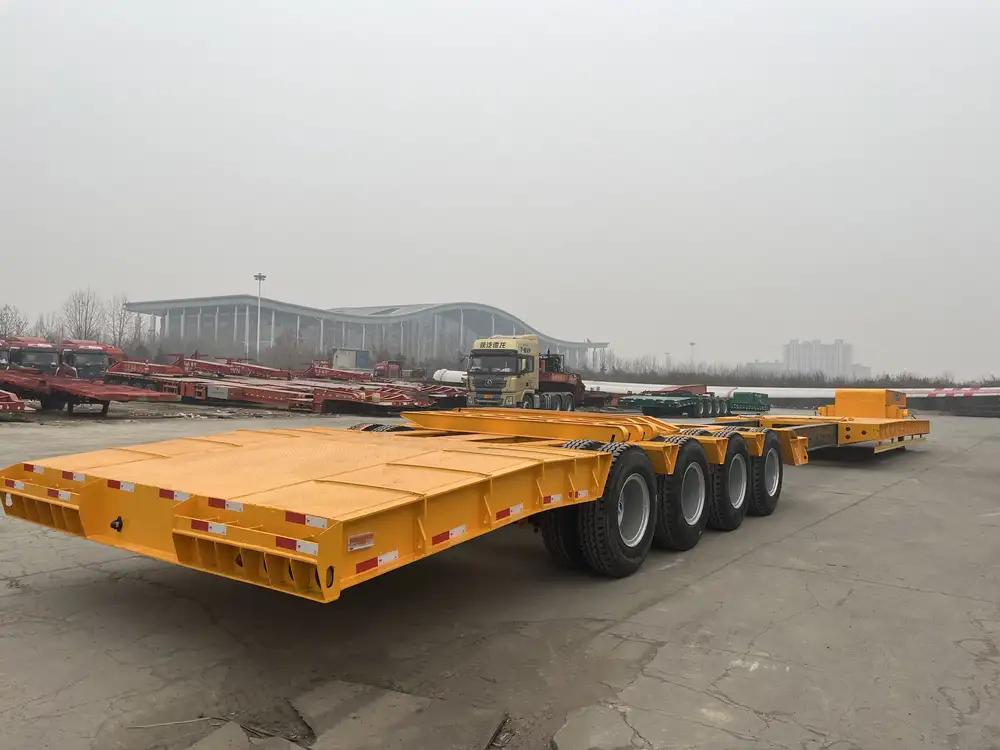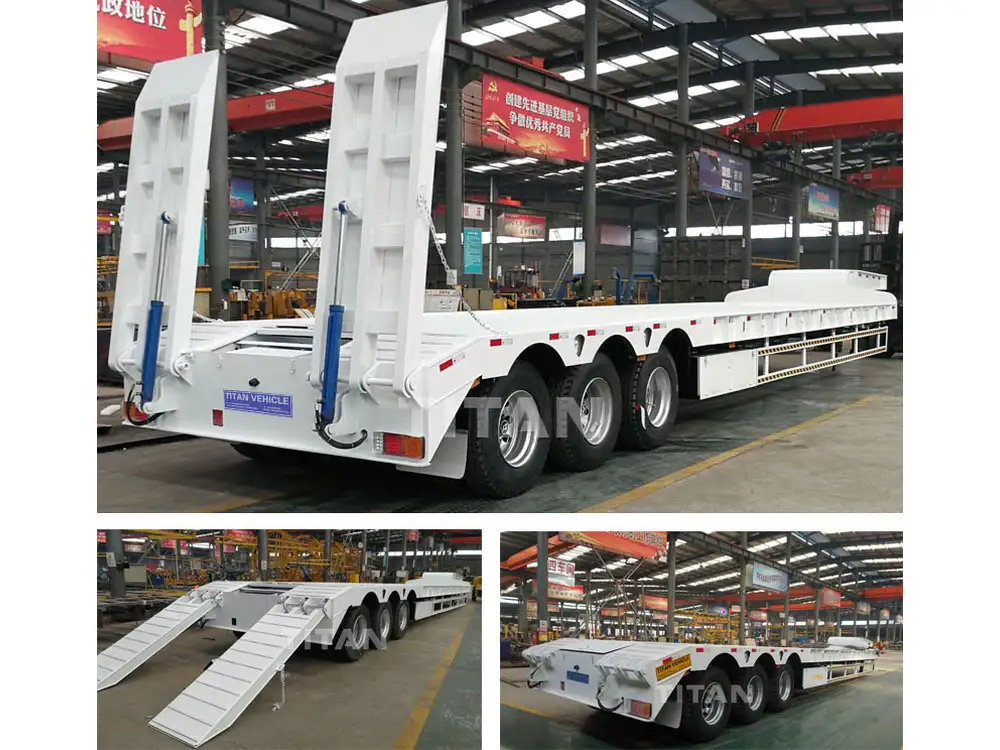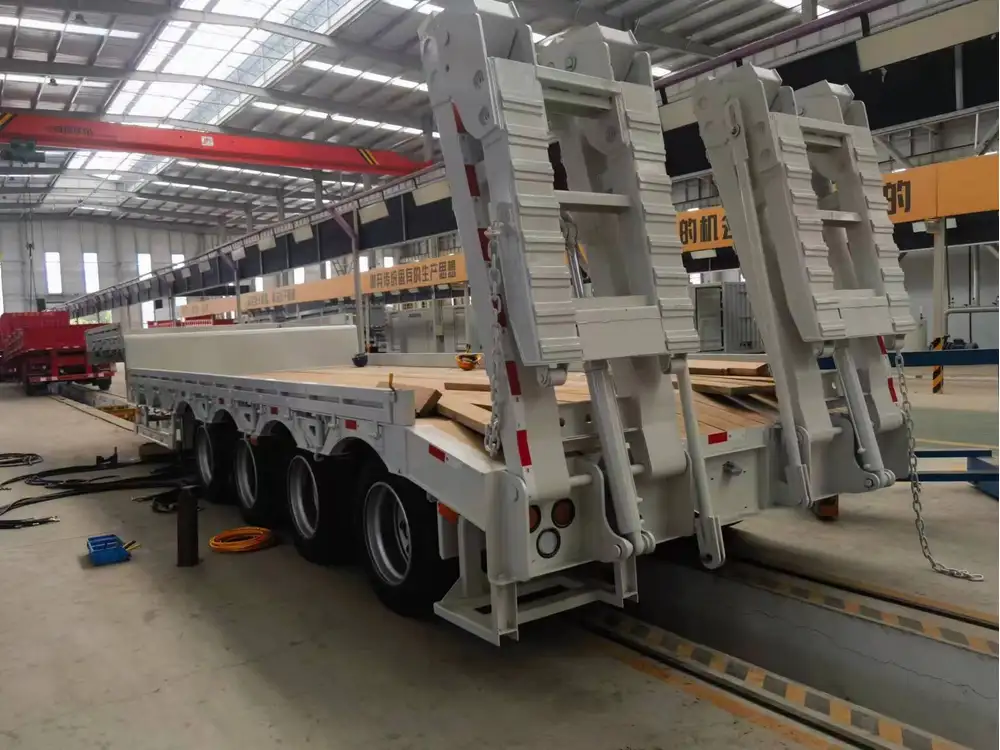When considering the logistics and freight transport industry, understanding the average weight of semi tractor trailers is paramount. This knowledge not only affects compliance with federal and state regulations but also plays a crucial role in optimizing transport routes and maximizing efficiency.
Types of Semi Tractor Trailers: An Overview
Before delving into average weights, it’s essential to explore the various types of semi tractor trailers on the market. Each type is designed for specific cargo needs, which influences its overall weight.
| Type of Semi Trailer | Average Weight (lbs) | Description |
|---|---|---|
| Flatbed | 48,000 – 53,000 | Used for transporting heavy loads that do not require an enclosure. |
| Reefer | 65,000 – 75,000 | A refrigerated trailer used to transport perishable goods. |
| Dry Van | 65,000 – 80,000 | Enclosed trailers for transporting goods that need protection from the elements. |
| Tanker | 75,000 – 80,000 | Designed to carry liquids such as fuel or chemicals. |
| Lowboy | 40,000 – 60,000 | Ideal for hauling heavy equipment or machinery. |
Understanding the Average Weight Components
The average weight of a semi tractor trailer is typically influenced by several key components: the tractor (the front part), the trailer (the cargo-carrying unit), and the payload (cargo weight). Each component contributes to the overall weight in different ways.
Tractor Weight: A standard semi truck tractor generally weighs between 15,000 to 25,000 pounds, depending on its design, engine size, and features. These vehicles are equipped with powerful engines, solid frames, and advanced technology designed to handle heavy loads efficiently.
Trailer Weight: The trailer’s weight varies significantly based on its type and construction material. A flatbed trailer may weigh around 10,000 to 15,000 pounds, while a reefer could range from 15,000 to 25,000 pounds due to its cooling equipment.
Payload Weight: The weight of the cargo transported can vary greatly. Federal regulations dictate strict limits on how much weight can be carried, often capped at 80,000 pounds for commercial vehicles on interstate highways in the U.S.

The Average Weight Calculation
To calculate the average weight, we can use the following formula:
Average Weight of Semi Tractor Trailer = Weight of Tractor + Weight of Trailer + Payload
For example, with a standard dry van, the calculation may look like this:
- Tractor Weight: 20,000 lbs
- Trailer Weight: 15,000 lbs
- Payload: 45,000 lbs
Total Average Weight: 20,000 + 15,000 + 45,000 = 80,000 lbs
Here is a representation of how the components stack up:
| Component | Weight (lbs) |
|---|---|
| Tractor | 20,000 |
| Trailer | 15,000 |
| Payload | 45,000 |
| Total | 80,000 |
Regulatory Standards and Weight Limits
Compliance with weight regulations is critical for trucking companies. The federal limit for a semi tractor trailer combination on interstate highways is 80,000 pounds, but this can vary by state and local regulations. Below are some key points regarding weight limits:

Federal Weight Limits
- Interstate Highways: Maximum of 80,000 lbs.
- Single Axle: Maximum of 20,000 lbs.
- Tandem Axles: Maximum of 34,000 lbs.
Note: Additional considerations may apply based on state-specific regulations, including bridge formulas that factor in the number of axles and distance between them.
Implications of Weight on Transport Logistics
Understanding weight not only helps ensure compliance but also impacts logistics decisions. Heavier loads might result in higher fuel consumption, longer transit times, and the need for more robust infrastructure. Below are some critical implications of weight to consider:
Fuel Efficiency
Greater weight typically translates to decreased fuel efficiency. Heavy trucks tend to have lower miles per gallon (MPG). Therefore, optimizing the payload without exceeding the weight limit is crucial to maintaining profitability.

Routing Concerns
Certain roads and bridges have weight restrictions that necessitate route planning based on the weight of the load. GPS technologies now often have options to consider weight restrictions, enabling freight companies to avoid penalties or potential hazards.
Maintenance and Tire Wear
Increased weight can lead to greater tire wear and more frequent maintenance needs. Heavy loads can strain parts of the truck, which can inflate operational costs over time.
Strategies to Optimize Semi Tractor Trailer Weight
Maximizing freight efficiency requires a keen understanding of weight management strategies. Here are several methods to keep weights optimized:

Load Distribution
Improper load distribution can lead to issues such as uneven tire wear and potential safety hazards. Maintaining the correct load balance across the axles is crucial for vehicle stability.
Technology Integration
Utilizing fleet management software can help monitor loads, maintenance schedules, and overall efficiency. Such tools enable real-time tracking of cargo weight and compliance with regulations.
Material Selection
Utilizing lightweight materials for the construction of trailers can effectively reduce overall weight. For example, aluminum trailers provide the dual benefit of being both lightweight and durable, allowing for greater payload capacities.

What to Consider When Purchasing a Trailer
When investing in a semi tractor trailer, buyers should consider several factors that might affect weight and performance:
1. Purpose of Transportation
Understanding the type of goods that will be transported can guide decisions regarding trailer type, which directly affects weight specifications.
2. State Regulations
Always check with local and state regulations regarding weight limits before making a purchase. Depending on the jurisdiction, you might need to purchase a specific trailer type to comply.

3. Future Needs
Anticipating future transportation demands can influence the decision. Purchasing more capacity than the current needs may seem costly today but can offer savings over time if your freight needs expand.
Frequently Asked Questions About Semi Tractor Trailer Weight
What is the maximum allowable weight for a semi tractor trailer?
The maximum allowable weight is 80,000 lbs on interstate highways, but this may vary based on state and local regulations.

How does the weight of a semi tractor trailer affect fuel performance?
Heavier loads typically decrease fuel performance, resulting in lower miles per gallon and increased operating costs.
Are there any penalties for overweight trucks?
Yes, being overweight can lead to hefty fines and penalties. Additionally, it increases the risk of breakdowns and accidents.
How can I ensure my load is compliant with weight limits?
Implement proper measurement techniques at the loading dock and utilize weight sensors to monitor loads accurately.

Conclusion: Mastering the Average Weight for Efficiency Gains
Understanding the average weight for a semi tractor trailer is not just an academic exercise; it is a fundamental aspect of efficient logistics management. By grasping the dynamics of weights, regulations, and optimization strategies, manufacturers and freight companies can significantly enhance operational efficiency, streamline costs, and ensure compliance with transportation regulations.
In the ever-changing landscape of freight logistics, mastering the average weight of semi tractor trailers can open avenues for improved profitability and sustained growth. Commencing your journey with rigorous weight management and smart trailer design will set the foundation for long-term success in the transportation industry.



